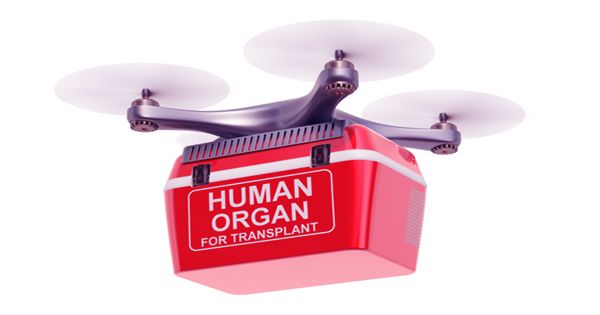Fortunately, the efficiency of organ transport networks has been seen to increase dramatically, with a woman from the University Of Maryland Medical Center being the first person to receive a charitable kidney that was transmitted by drone. More than 100,000 people in the United States alone are currently waiting for an organ transplant, so time is of the essence when it comes to the rare opportunity to receive a charity organ.
One of the frustrations for those waiting for an organ transplant is that the appropriate organs often do not arrive. When someone on the organ donor list dies their heart, lungs, kidneys and some other parts of the body can sometimes be taken to a patient who needs a replacement, provided the condition is matched and the organs can be reached very quickly. The heart and lungs can only survive four to six hours outside the body and often have to be transported by road or on a chartered or commercial flight, meaning delays are sometimes inevitable. In addition, patients who are not close to the airport are less likely to receive an organ at any time.
To combat this, researchers created a drone specifically designed to deliver human organs. The aircraft features eight rotors, gives great durability, and is equipped with a system called Human Organ Monitoring and Quality Assurance Equipment for long-distance travel. Maintains and maintains the temperature, barometric pressure, altitude, vibration, and position, ensuring that the organ is in perfect condition while transmitting all relevant information to the surgeon’s smartphone.
The 44-year-old kidney client, who suffered from renal failure and spent the last eight years on dialysis, underwent surgery on April 19 and was released from the hospital three days later. “This whole thing is amazing. A few years ago, this was not something you would think,” he said after receiving a kidney fly from another hospital about 4.6 kilometers (3 miles) away.
Unlike the heart and lungs, the kidneys can survive outside the body for up to 48 hours, which means they can be moved over long distances. However, finding a suitable kidney is complicated, because both the donor and the recipient must have a similarity in blood type, body size, and proteins in the immune system called HLA antigen.
With all of this in mind, the last thing transplant surgeons want to address is the travel delay, which is why using drones to deliver organs is an important invention.














